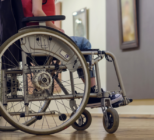The pandemic has inspired many trends, but one of the most notable for our sector has been the increase in the number of attractions and cultural sites investing in an off-site digital experience. From 3D virtual tours to video walk-throughs, we’ve been inspired by the many ways that sites have managed to virtually open their doors while their actual ones have, in many cases, been shut.
Little surprise then, that in a poll of museum and heritage professionals, 6 in 10 said they are currently planning to invest in an off-site digital experience for their visitors. The research was part of a recent webinar ‘Using Technology to Aid Visitor Experience in the age of Covid’, which featured contributions from Dave Patten, head of new media at the Science Museum, and Alec Ward, museum development officer at Museum of London.
The latter, who has been running the Digital Training Programme for museums across London since 2015, noted: “We’ve seen a real increase, unsurprisingly, in the last few months since lockdown and museums are asking for support with digital – specifically how to engage with their audiences online.”
Part of his task has been to assist smaller organisations who had previously been self-supporting to find ways of raising revenue, be that through online fundraising or holding online events.
The pre-visit experience has also come much more into focus, as audiences are making more of an effort to qualify what facilities are open and on offer before they visit. “Know where your audience is getting their information from. In all likelihood it’s going to be your website or social media. But there’s also a good chance you’ve got a TripAdvisor page or a Google business page,” Ward states.
It’s important to keep everything up to date across all sites – updated opening times, information on timed ticketing, what facilities are open.
For the Science Museum, like many other free sites, introducing timed ticketing was a new experience and they saw the potential advantages from the start. “We’re now collecting much more information on our visitors and we email everyone who has a booked slot before they come and to give them up to date information,” notes Dave Patten.
“We also follow up after their visit and are building up an onward contact”. This allows them to have a better and deeper relationship with those visitors.
Another surprise return as a result of recent events has been the infamous QR code. From supermarkets to restaurants to visitor attractions, people using their phones to scan and reveal everything from drinks menus to audio tours. “Now that newer models of phones have QR codes natively in the camera, the QR code gives you the link to the action that’s required,” Ward explains. “Even at the Museum of London, we recently opened the Havering Hall exhibition and the QR code brings up the interactives”.

Touchscreens also featured heavily in the conversation, particularly people’s willingness to continue touching them when operations resumed again at the Science Museum. Patten and his team “decided to open with all touch screens and we have a very enhanced and visible cleaning regime with lots of hand sanitisers,” he says.
“We did consider not running the touchscreens but from conversations with other museums, we found that visitors continued to touch them when they were switched off in the expectation that they would magically come to life.”
This ‘theatre of cleaning’ is common now in museums and attractions across the country and helps to instil confidence in visitors that they are in a safe environment. ATS clients reported no decrease in uptake on on-site devices, batting away the assumption that visitors from now on will only participate in a contactless experience.
The conversation also acknowledged that this is a great age for experimentation and Science Museum’s head of new media is keen that we’re not just seeing the introduction of technology for ‘technology’s sake’. “We’re having to work differently and think about things that were unchanged for so long. We have to work hard to make sure that the things we do improve the experience for the visitors in the longer term.”
To discuss your upcoming projects and find out more about how ATS Heritage can help you, contact the team today.










